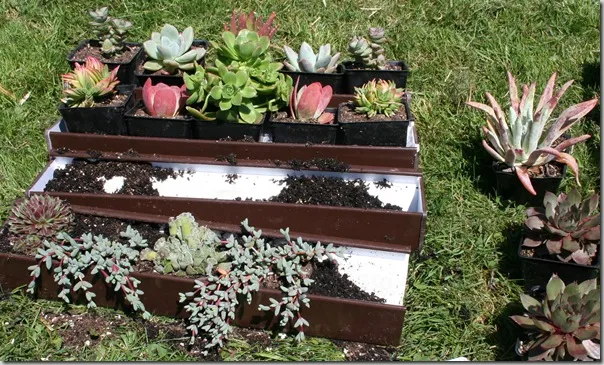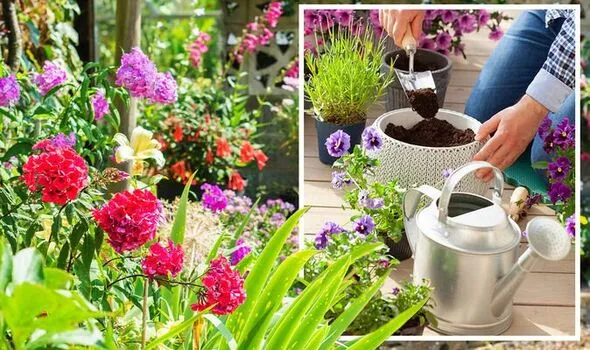- Perfect for small gardens & containers.
- Easy to grow, even for beginners.
- Harvest fresh herbs right from your door.
- Elevate your cooking with homegrown flavor.
- Parsley and cilantro: A classic culinary pair.
There’s something truly special about stepping into your garden, or even just onto your balcony, and snipping fresh herbs for your cooking. The vibrant aroma and intense flavor are simply unmatched by anything from the store. And the good news? You don’t need acres of land to enjoy this simple pleasure. Even if you only have a balcony, a small patio, or a sunny windowsill, you can easily cultivate incredible flavor right at home. Today, we’re diving into the wonderful world of small parsley & cilantro combos, a popular and rewarding choice for home gardeners looking to maximize taste in limited space.
Contents
- Why These Two Herbs Are a Winning Duo
- Choosing the Right Varieties for Your Mini Garden
- All About the Herbs:
- Parsley
- Cilantro
- Planting Your Small Herb Combo
- Care and Keeping: Nurturing Your Flavor Pair
- Harvesting Your Bounty
- Common Challenges in Small Herb Gardens
- Using Your Fresh Herbs: A Simple Vinaigrette
- Conclusion
Why These Two Herbs Are a Winning Duo
Parsley and cilantro might look somewhat similar from a distance, but their flavors are distinctly different and incredibly versatile in the kitchen. Parsley offers a fresh, slightly peppery, and clean taste, while cilantro brings a bright, citrusy, and slightly soapy note (for those who love it!). This makes them a dynamic pair for countless dishes, from vibrant salsas and fresh salads to comforting soups and fragrant curries. Growing them together in a small parsley and cilantro garden combo means you always have both essential flavors within reach. Beyond their culinary synergy, they are also relatively straightforward to grow, making them ideal for beginners and seasoned small-space gardeners alike.
Choosing the Right Varieties for Your Mini Garden
Selecting the right types of parsley and cilantro can help ensure success in your small space.
- Parsley: You’ll typically find two main types:
- Flat-Leaf Parsley (Italian Parsley): Generally favored for its stronger flavor, this variety is excellent for cooking. It grows well in containers.
- Curly Parsley: Often used as a garnish due to its frilly appearance, it also has a milder flavor. It tends to be quite bushy and can work in pots. For a flavor-focused combo, flat-leaf is often preferred.
- Cilantro: The main challenge with cilantro is its tendency to “bolt” (go to seed) quickly in warm temperatures. Look for “slow-bolt” varieties if possible, though timing and location (like partial shade in summer) are key to extending the harvest.
Both herbs appreciate consistent moisture and can thrive side-by-side in a suitably sized container.
All About the Herbs:
Parsley
- Scientific Name: Petroselinum crispum (curly), Petroselinum neapolitanum (flat-leaf)
- Common Name: Parsley, Italian Parsley
- USDA Zones: 3-9 (often grown as annual, though can be biennial)
- Light: Full sun to partial shade
- Humidity: Moderate
- Water: Consistent moisture; do not let soil dry out completely
Cilantro
- Scientific Name: Coriandrum sativum
- Common Name: Cilantro, Coriander (seeds)
- USDA Zones: 2-11 (typically grown as cool-season annual)
- Light: Full sun (in cooler weather) to partial shade (in warmer weather)
- Humidity: Moderate
- Water: Consistent moisture; avoid waterlogging
Planting Your Small Herb Combo
Growing your small parsley & cilantro combos successfully starts with good planting practices.
Choose a container that is at least 8-10 inches in diameter and depth with drainage holes. A terracotta pot can work, but might dry out faster than plastic or glazed ceramic. Fill the pot with a good quality, well-draining potting mix – never use garden soil in containers as it compacts too much.
You can start both herbs from seed. Sow seeds directly into the pot following package instructions (usually about ¼ to ½ inch deep). Parsley seeds can be slow to germinate, sometimes taking up to 3 weeks. Soaking them overnight before planting can help speed this up. Cilantro germinates faster. If planting both in the same pot, give them a little space – perhaps plant parsley on one side and cilantro on the other, or space seedlings about 6-8 inches apart if using transplants. Cilantro generally dislikes having its roots disturbed, so direct sowing is often preferred.
Care and Keeping: Nurturing Your Flavor Pair
Once planted, consistent care is key to a thriving small parsley and cilantro garden.
- Light: Both herbs need sunlight. Aim for at least 4-6 hours of sun per day. In hot climates, cilantro will benefit from afternoon shade to prevent bolting. Parsley is a bit more forgiving.
- Watering: This is crucial, especially in containers which dry out quickly. Keep the soil consistently moist but not waterlogged. Water thoroughly when the top inch of soil feels dry to the touch. Ensure excess water drains away freely.
- Feeding: Herbs generally don’t need heavy feeding. Amending the soil with some compost before planting is usually sufficient. A light feeding with a balanced liquid fertilizer diluted to half-strength once every 4-6 weeks during the growing season can be beneficial, but avoid over-fertilizing, which can reduce flavor.
- Temperature: Parsley is quite hardy and can tolerate cooler temperatures, even some frost. Cilantro is a cool-season crop; it grows best in spring and fall and will quickly bolt when temperatures rise consistently above 75°F (24°C). Providing shade can help, but often succession planting (sowing new seeds every few weeks) is the best way to have a continuous cilantro harvest.
Harvesting Your Bounty
Regular harvesting encourages bushier growth and provides you with a constant supply of fresh herbs. Once the plants are established (a few inches tall with several sets of leaves), you can start harvesting.
For both parsley and cilantro, use clean scissors or snips to cut the outer stems near the base of the plant. This “cut-and-come-again” method allows the inner leaves to continue growing. Avoid cutting more than one-third of the plant at a time. Frequent harvesting keeps cilantro from bolting as quickly.
Common Challenges in Small Herb Gardens
Even with easy herbs, you might encounter a few issues:
- Bolting (Cilantro): As mentioned, heat is the main culprit. When cilantro sends up a tall flower stalk, its energy shifts from leaf production to seed production, and the leaves become less flavorful. Harvest regularly, provide shade in heat, and succession plant to mitigate this.
- Yellowing Leaves: Often a sign of improper watering (either too much or too little) or sometimes a nutrient deficiency. Check soil moisture first.
- Pests: While generally resistant, keep an eye out for common pests like aphids or spider mites. A gentle spray of insecticidal soap or neem oil can help if needed. Good air circulation also helps prevent problems.
Using Your Fresh Herbs: A Simple Vinaigrette
Now that you’ve successfully grown your vibrant small parsley & cilantro combo, it’s time to enjoy the fruits (or rather, the leaves!) of your labor. One of the easiest and most delicious ways to showcase their fresh flavor is in a simple herb vinaigrette. This is a fantastic upgrade from store-bought dressings and proves just how much difference homegrown herbs make.
To make a quick and flavorful vinaigrette focused on your parsley and cilantro, gather a generous cup packed with freshly harvested leaves and tender stems. In a blender or food processor, combine your herbs with a clove of garlic, a few tablespoons of white wine vinegar or apple cider vinegar, a pinch of salt, and a touch of sweetness like honey or agave.
 Ingredients including fresh parsley, cilantro, garlic, and oil in a food processor, ready to blend into a garden herb vinaigrette
Ingredients including fresh parsley, cilantro, garlic, and oil in a food processor, ready to blend into a garden herb vinaigrette
Add about half a cup of good olive oil. Blend until the herbs are finely minced and the dressing is emulsified. Taste and adjust seasonings – maybe a little more salt, a dash of pepper, or extra sweetness.
 Freshly made herb vinaigrette in a glass jar, showcasing the vibrant green of homegrown parsley and cilantro
Freshly made herb vinaigrette in a glass jar, showcasing the vibrant green of homegrown parsley and cilantro
This fresh dressing is perfect over salads, roasted vegetables, or as a quick marinade. Stored in a jar in the fridge, it keeps for several days, allowing you to enjoy the taste of your garden with every meal.
 Delicious salad topped with homemade dressing, highlighting the fresh flavor from a small parsley and cilantro garden combo
Delicious salad topped with homemade dressing, highlighting the fresh flavor from a small parsley and cilantro garden combo
Conclusion
Growing your own herbs, especially a simple small parsley & cilantro combo, is an incredibly rewarding experience. It’s accessible even with limited space, adds beauty to your surroundings, and provides an endless supply of fresh, flavorful ingredients right at your fingertips. From planting a few seeds to snipping leaves for a vibrant vinaigrette, the journey from soil to plate is a delightful one. Ready to add fresh flavor to your life? Try growing these fantastic herbs!
Have you grown parsley and cilantro together in a small space? Share your tips and favorite uses in the comments below! Or browse more gardening inspiration on Thelittle.garden!







































